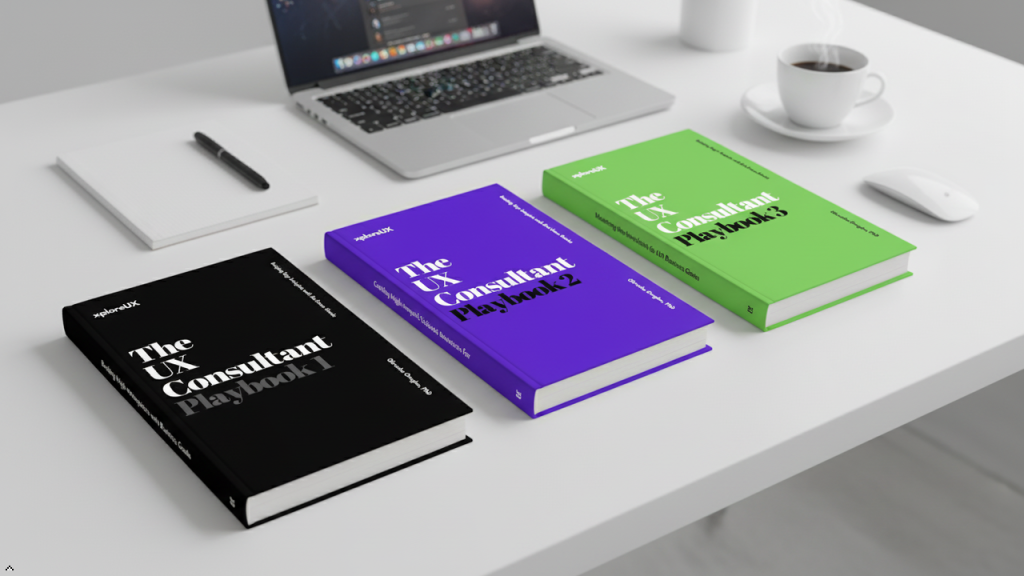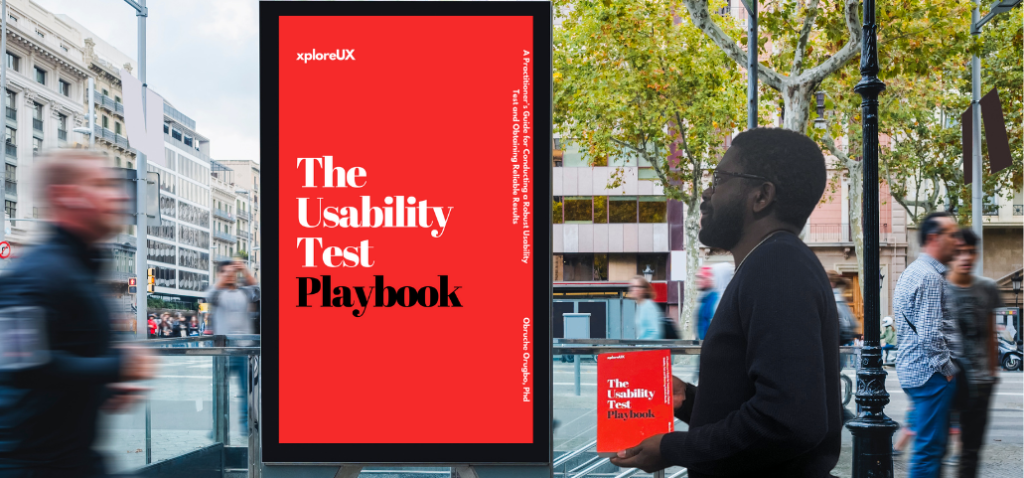
The financial services industry has been undergoing a seismic shift, with digital transformation playing a pivotal role in how consumers engage with banks, investment platforms, and insurance companies. The need for a superior UX has never been more critical. Financial institutions that invest in understanding their users’ needs and behaviors can differentiate themselves in a highly competitive market. But the challenge many faces is how to do it efficiently without compromising the depth of insights this is where rapid UX research comes in.
In this blog post, we’ll explore how rapid UX research benefits the financial services industry, why it’s particularly suited for this sector, and how to implement it effectively without sacrificing quality. Whether you’re a UX professional working within financial services or a business owner looking to enhance your digital presence, this post will guide you through the essentials of rapid UX research and how it can give you a competitive edge.
Rapid UX research is a streamlined approach to user experience studies that focuses on speed, efficiency, and agility. Unlike traditional UX research, which might take weeks or months, rapid UX research methods can yield actionable insights within a matter of days. The goal is to gather critical feedback early and often, allowing teams to iterate quickly and bring user-centered products to market faster.
The concept doesn’t sacrifice the quality of insights for speed. Instead, it leverages focused techniques like guerrilla testing, remote usability testing, and card sorting to deliver insights in a fraction of the time. When done right, rapid UX research allows companies to make informed design decisions without the long turnaround times typically associated with conventional UX research methods.
Financial services are not just competing with other financial institutions anymore—they are competing with every other digital experience their customer’s encounter. Amazon, Netflix, and Google have set the bar for user-friendly design, and now consumers expect the same level of convenience and personalization from their financial institutions.
Here’s why rapid UX research is particularly valuable for financial services:
- Fast-Paced Market Demands: Fintech companies and traditional banks alike are under immense pressure to release new features, apps, or products quickly to keep up with consumer expectations and regulatory changes.
- Complex User Needs: Customers interacting with financial services often have complex, high-stakes goals such as managing investments, securing loans, or transferring large sums of money. This requires precise, user-friendly interfaces to avoid frustration or costly errors.
- Regulatory Compliance: In financial services, compliance with regulations like GDPR, PSD2, or the U.S. Consumer Financial Protection Bureau’s requirements must be considered during the design phase. Rapid UX research can identify friction points early, ensuring that the final product remains compliant without necessitating extensive rework.
- Mitigating Risk: The financial sector is built on trust, and a poor UX can severely erode consumer confidence. Rapid research helps detect usability issues before they escalate, protecting your brand and preventing costly mistakes.
- High Customer Lifetime Value (CLV): The financial services industry often deals with customers over extended periods, like mortgages or long-term investments. Improving the UX can lead to higher retention rates and deeper customer loyalty, maximizing CLV.
Given the unique challenges and opportunities in financial services, let’s dive deeper into how rapid UX research delivers tangible benefits to businesses.
- Faster Time to Market
In a sector where time is money, getting your product or feature to market quickly is crucial. Whether you’re launching a new mobile banking app or an online investment platform, speed can make the difference between being a market leader or an also-ran.
Rapid UX research condenses the testing cycle by focusing on the most critical touchpoints in the user journey. Instead of waiting for comprehensive research, businesses can roll out features and updates while continuously optimizing the UX based on immediate feedback. This helps avoid expensive last-minute changes and ensures you’re iterating based on real user insights rather than assumptions.
- Cost Efficiency
Traditional UX research can be a resource-intensive endeavor, especially when conducted over long periods. This is particularly challenging for startups and mid-sized financial companies operating on tight budgets. Rapid UX research, however, focuses on essential data points, saving both time and money.
By concentrating on early-stage, iterative testing—through methods like remote usability tests or quick A/B tests—companies can reduce development costs associated with redesigns. Fixing UX issues early also helps avoid more costly problems down the road, like user churn or, worse, brand damage due to a poor customer experience.
- Addressing User Pain Points Early
In financial services, users are often dealing with high-stakes tasks—whether it’s managing their retirement savings, transferring funds between accounts, or checking on the status of a loan. Any friction in these processes can lead to frustration and, potentially, lost business.
Rapid UX research allows teams to quickly identify these pain points before they become deal breakers for the user. For example, guerrilla usability testing can reveal whether users are confused by a particular feature in a new app, and quick adjustments can be made before the app’s full release.
A common scenario in financial services is complex onboarding processes. With rapid UX research, you can test this process with real users in a few days, identify bottlenecks, and implement changes, ensuring users are not deterred by long or complicated sign-up procedures.
- Real-Time Feedback on Iterative Designs
One of the core principles of modern product development is the ability to iterate based on real-time data. Financial institutions that use rapid UX research can incorporate user feedback during the design process itself, allowing for continuous improvements.
For instance, you can conduct short sprints of user research after each design iteration, providing your team with real-time feedback. This method can be particularly beneficial for testing sensitive features such as credit applications or investment tracking tools, where a seamless UX can significantly impact user trust and satisfaction.
- Enhanced Personalization
Personalization is becoming a key differentiator in financial services. Customers expect tailored experiences, whether it’s personalized budgeting tools, customized investment options, or hyper-relevant product recommendations. Rapid UX research allows companies to test personalization features quickly and iterate on them to better meet user expectations.
By using techniques such as quick, qualitative interviews and remote usability testing, financial companies can identify what users value most in terms of personalized offerings. Is the algorithm recommending the right credit card based on a user’s spending habits? Are investment portfolio recommendations clear and easy to act upon? Rapid UX testing provides the data to make these personalization features work seamlessly.
- Supporting Agile Development
Many financial service providers are adopting agile methodologies for faster development cycles, and rapid UX research fits perfectly into this framework. Agile teams rely on iterative improvements, which are only possible when there is continuous user feedback.
Rapid UX research allows for frequent testing that fits into agile sprint cycles. This alignment ensures that UX decisions are driven by real user insights at every stage of product development, reducing the risk of spending valuable time building a product that doesn’t meet user needs.
- Validating Hypotheses and Reducing Assumptions
It’s easy to fall into the trap of designing based on assumptions, especially in industries like financial services where the technical complexity of products can overshadow user needs. Rapid UX research helps you test and validate these assumptions early, reducing the risk of launching products that users struggle to understand or navigate.
For example, when designing a new feature like a financial health tracker, you may hypothesize that users will value detailed data and analytics. But rapid usability tests could reveal that they prefer simple, visual summaries instead. Armed with these insights, you can adapt the feature to match actual user preferences rather than internal assumptions.
Now that you know the benefits, the next question is: How do you implement rapid UX research in the unique, highly regulated world of financial services?
- Start with Clear Objectives
To avoid scope creep, define the specific goals of your UX research upfront. Are you trying to improve your mobile app’s onboarding process? Do you want to make your loan application process more intuitive? By identifying your objectives, you can select the most appropriate rapid research method and avoid wasting time on irrelevant data.
- Leverage Remote Testing
In the era of digital banking, remote usability testing is both practical and effective. Tools like UserTesting or Lookback allow you to gather insights from real users interacting with your product in their own environments, which is especially valuable for testing on mobile devices or secure, financial-related interfaces.
- Use Guerrilla Testing for Quick Feedback
Guerrilla testing is a method that involves quickly getting feedback from users, often in informal settings. In financial services, this could mean asking potential users to complete simple tasks like transferring money between accounts, then gathering insights from how they approach the task and what problems they encounter.
- Conduct Rapid Surveys
When dealing with sensitive information or security concerns in financial services, you may not always have access to direct users for testing. In these cases, quick surveys sent to a targeted user base can provide fast feedback on design decisions, layout, or new features.
- Integrate with Agile Sprints
If your company follows an agile development framework, time UX research with sprint cycles to ensure that design iterations benefit from user feedback. This may involve scheduling usability tests at the end of each sprint and using those findings to inform the next cycle of development.
- Focus on Critical Journeys
When time is limited, prioritize testing the most important user journeys. In financial services, this could mean the payment flow, investment decision paths, or customer support touchpoints. By focusing on these high-impact areas, you can improve the overall UX quickly and effectively.
Rapid UX research offers a robust framework for financial institutions to stay competitive in a fast-evolving market. By quickly identifying and resolving user pain points, businesses can bring products to market faster, reduce development costs, and foster long-term customer loyalty.
Whether you’re a UX professional working in fintech, or a business owner aiming to improve your digital financial products, adopting rapid UX research can transform your approach, helping you deliver user-friendly, compliant, and innovative solutions in record time.
As the financial services landscape continues to evolve, the institutions that invest in quick, iterative UX research will be best positioned to lead the market and build lasting relationships with their users.




